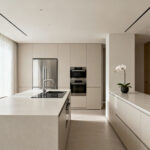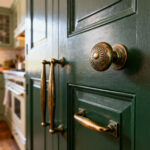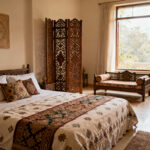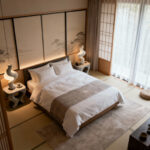Imagine stepping into your living room as the sun dips below the horizon. The warm glow of carefully chosen lights transforms the space, creating an ambiance that reflects your unique style and meets your everyday needs. From the soft illumination of table lamps to the dramatic accent of pendant lights, living room lighting ideas are as diverse as the homes they inhabit.
The evolution of home lighting is a fascinating journey that mirrors our technological progress and changing lifestyles. From the flickering flames of oil lamps in ancient dwellings to the smart LED bulbs of today, we’ve continually sought ways to bring light into our living spaces. The living room, often the heart of our homes, demands particular attention when it comes to lighting design.
In this article, we’ll explore a spectrum of living room lighting ideas that cater to various styles and needs. Whether you’re searching for the perfect living room light fixture or looking to create a cozy reading nook, we’ll shed light on the options available to you. Let’s illuminate the path to a beautifully lit living space that’s as functional as it is inviting.

Key Considerations for Living Room Lighting
Before we dive into specific living room lighting ideas, it’s essential to understand the fundamental principles that guide effective lighting design. These considerations will help you create a space that’s not only visually appealing but also functional and energy-efficient.
The Power of Layered Lighting
Layering living room lighting for function and ambiance is a crucial concept in interior design. This approach involves using multiple light sources at different levels to create depth, eliminate harsh shadows, and provide flexibility for various activities.
Typically, layered lighting consists of three main components:
- Ambient lighting: This provides overall illumination and sets the base level of light in the room.
- Task lighting: Focused lighting for specific activities like reading or working.
- Accent lighting: Used to highlight architectural features, artwork, or decorative elements.

By combining these layers, you can create a versatile lighting scheme that adapts to different moods and functions. For instance, you might use recessed ceiling lights for ambient lighting, a floor lamp next to a reading chair for task lighting, and wall sconces to accentuate a piece of art.
The Impact of Color Temperature
The color temperature of your light bulbs plays a significant role in setting the mood of your living room. Measured in Kelvin (K), color temperature ranges from warm (2700K-3000K) to cool (3500K-5000K) tones.
Warm light creates a cozy, inviting atmosphere ideal for relaxation, while cooler light enhances focus and visibility. For living rooms, many people prefer warm white light (2700K-3000K) as it creates a comfortable and welcoming environment.

Interestingly, our perception of color temperature can affect our circadian rhythms. Warmer lights in the evening can help prepare our bodies for sleep, while cooler lights during the day can boost alertness and productivity.
Energy Efficiency and Sustainability
In today’s world, energy efficiency is more than just a trend—it’s a necessity. When considering living room lighting ideas, it’s crucial to factor in the long-term energy consumption and environmental impact of your choices.
LED bulbs have revolutionized home lighting, offering significant energy savings and longevity. They use up to 80% less energy than traditional incandescent bulbs and can last up to 25,000 hours or more. This translates to lower electricity bills and fewer bulb replacements over time.

To put this into perspective, replacing 30 incandescent bulbs with LED equivalents could reduce your annual energy consumption from 3285 KWh to just 329 KWh. That’s a substantial difference that benefits both your wallet and the environment.
Types of Light Bulbs for Your Living Room
Now that we’ve covered the fundamental principles, let’s explore the various types of light bulbs available for your living room. Choosing the right living room light bulbs is crucial for achieving the desired ambiance and functionality.
The LED Revolution
Light Light-emitting diode (LED) bulbs have transformed the lighting landscape, offering unparalleled energy efficiency and versatility. These modern marvels consume minimal power while providing bright, customizable light.
LEDs come in a wide range of color temperatures, allowing you to create different moods in your living room. They’re also available with adjustable output and can be customized to simulate various light environments, from daylight to warm sunset hues.
One of the most significant advantages of LED bulbs is their longevity. With a lifespan of up to 50,000 hours, an LED bulb used for 6 hours a day could last nearly 23 years! This extended lifespan not only reduces the frequency of replacements but also minimizes waste.

Moreover, LEDs are incredibly durable and can handle physical stress, making them ideal for high-traffic areas or fixtures that might be subject to vibrations. They emit very little heat—only about 3.4 BTUs per hour—enhancing their safety and energy efficiency.
The Warm Glow of Incandescent Bulbs
While not as energy-efficient as their LED counterparts, incandescent bulbs still have a place in many living rooms. These traditional bulbs provide a warm, familiar light that many find comforting and aesthetically pleasing.
Incandescent bulbs excel in color rendering, producing a full-spectrum light that enhances the natural colors of your decor. This makes them particularly suitable for showcasing artwork or creating a cozy atmosphere in traditional or vintage-style living rooms.

However, it’s important to note that incandescent bulbs are less efficient, converting only about 10% of their energy into light. The rest is lost as heat, which can contribute to higher energy bills and potential safety concerns. With a lifespan of around 1,000 hours, they also require more frequent replacements compared to other options.
The Balanced Approach of Fluorescent Bulbs
Fluorescent bulbs, including Compact Fluorescent Lamps (CFLs), offer a middle ground between the energy efficiency of LEDs and the lower upfront cost of incandescent. These bulbs use about 75% less energy than traditional incandescent bulbs and can last up to 15,000 hours.
CFLs are available in a range of color temperatures, from warm to cool tones, allowing you to customize the ambiance of your living room. They’re particularly effective for providing high levels of general illumination, making them suitable for larger living spaces.

However, it’s worth noting that fluorescent bulbs contain small amounts of mercury, which requires careful disposal to avoid environmental hazards. They may also take time to warm up to full brightness and can be sensitive to frequent on-off cycling, which can affect their lifespan.
Practical Living Room Lighting Ideas
With a solid understanding of lighting principles and bulb types, let’s explore some practical living room lighting ideas that can transform your space.
Creating a Cozy Reading Nook
A well-lit reading corner is a must-have for book lovers. To create the perfect reading nook, consider using a combination of ambient and task lighting. A floor lamp with an adjustable arm placed next to a comfortable armchair can provide focused light for reading without disturbing the overall ambiance of the room.

Opt for a lamp with a warm LED bulb (around 2700K) to create a cozy atmosphere. Look for bulbs with a high Color Rendering Index (CRI) to ensure the pages of your book are crisp and clear. Some smart LED bulbs even allow you to adjust the color temperature, so you can switch to a cooler, more energizing light for daytime reading.
Highlighting Architectural Features
Use accent lighting to draw attention to unique architectural elements in your living room. Recessed LED strip lights can beautifully illuminate a coffered ceiling or a built-in bookshelf. Wall sconces can accentuate the texture of an exposed brick wall or highlight a striking piece of artwork.
For a modern touch, consider using color-changing LED strips. These versatile lights can be tucked into crown molding or under floating shelves to add a dynamic element to your living room lighting. With the ability to change colors and intensity, you can easily adjust the mood of the room for different occasions.

Enhancing the Fireplace Area
If your living room features a fireplace, make it the focal point with strategically placed lighting. Recessed lights above the mantel can create a warm glow, while picture lights can illuminate artwork or family photos displayed on the mantel.
For a more dramatic effect, consider installing uplights in the fireplace itself. When the fire isn’t lit, these lights can create a soft, flickering glow that mimics the warmth of flames. Choose warm-toned LED bulbs (2700K-3000K) to complement the natural warmth of the fireplace area.
Illuminating Open-Concept Spaces
In open-concept living areas, lighting plays a crucial role in defining different zones. Use pendant lights over a dining area to create a visual separation from the living space. A large, statement chandelier can serve as a centerpiece, tying together various elements of an open-plan room.

Consider using track lighting or adjustable recessed lights to provide flexible illumination across the space. These versatile fixtures allow you to direct light where it’s needed, whether you’re hosting a dinner party or settling in for a movie night.
The Cost-Benefit Analysis of Living Room Lighting
When implementing living room lighting ideas, it’s essential to consider both the initial investment and long-term savings. Let’s break down the costs and benefits of different lighting options.
Initial Investment
LED bulbs typically have the highest upfront cost, ranging from $10 to $30 per bulb. However, their energy efficiency and longevity often justify this initial expense. Incandescent bulbs are the cheapest, costing about $1 to $3 each, while CFLs fall in the middle range at $5 to $15 per bulb.

When choosing fixtures, prices can vary widely depending on style and quality. A basic table lamp might cost $50, while a designer chandelier could run into thousands of dollars. It’s important to balance aesthetic preferences with budgetary constraints.
Long-Term Savings
The real savings come from reduced energy consumption and fewer replacements over time. Let’s consider the cost for 25,000 hours of use:
- LED: Approximately $26.25
- CFL: Around $40
- Incandescent: About $171
These figures include both the cost of bulbs and the electricity used. The substantial savings offered by LEDs become evident over time, especially when you consider that a typical living room might have 5-10 light sources.

Environmental Impact
Beyond financial considerations, it’s crucial to factor in the environmental impact of your lighting choices. LEDs significantly reduce CO2 emissions compared to incandescent bulbs. Over a year, replacing 30 incandescent bulbs with LEDs could reduce CO2 emissions by up to 451 pounds.
By choosing energy-efficient lighting options, you’re not just saving money—you’re also contributing to a more sustainable future.
Conclusion: Illuminating Your Perfect Living Space
As we’ve explored in this journey through living room lighting ideas, the right illumination can transform your space, enhancing both its functionality and aesthetic appeal. From the warm glow of a reading lamp to the dramatic accent of a chandelier, each light source plays a crucial role in creating the perfect ambiance.
Remember, effective living room lighting is about more than just banishing darkness. It’s about creating layers of light that can adapt to your needs throughout the day. By combining ambient, task, and accent lighting, you can craft a versatile space that’s as suitable for a cozy night in as it is for a lively gathering with friends.

As you implement these living room lighting ideas, consider the long-term implications of your choices. Opt for energy-efficient options like LED bulbs, which not only reduce your carbon footprint but also offer significant savings over time. And don’t be afraid to experiment with different combinations until you find the perfect balance for your space.
Ultimately, the best living room lighting ideas are those that reflect your style while meeting your practical needs. So, whether you’re drawn to the sleek lines of modern fixtures or the warm glow of traditional lamps, let your lighting choices illuminate the unique character of your home.
Now, it’s time to put these ideas into action. Take a fresh look at your living room and imagine the possibilities. With the right lighting, you can create a space that truly shines—in more ways than one.






